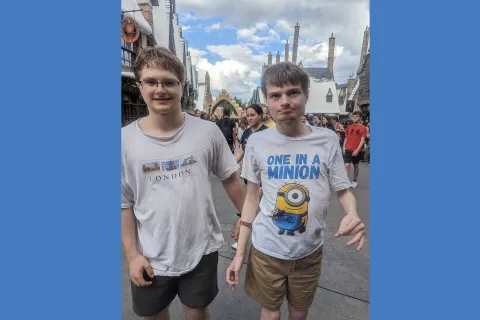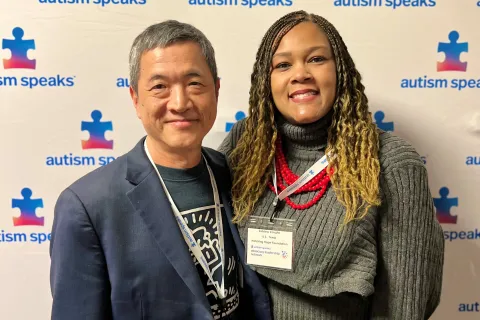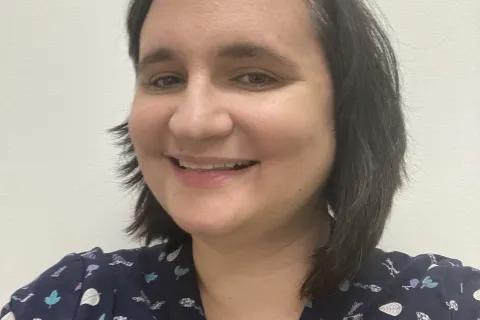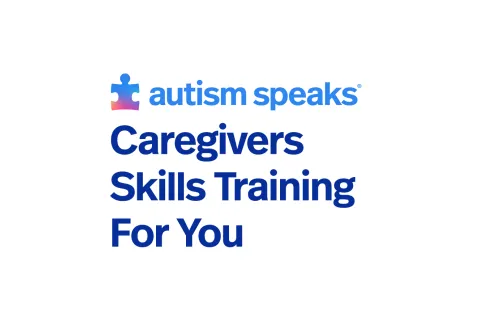Community Living
Transition Tool Kit
As you plan for the transition to adulthood, it is important to remember that integration into the community is a key component of happiness and independence in the lives of adults with autism.
You may want to think early on about introducing your child to members of the community. As your child grows older, you and his or her educators may need to become creative in your efforts to create opportunities for social interactions. Whether your child has contact with the bagger at the grocery store or the crossing guard outside his or her school, these regular interactions are the foundation for being part of the community. This is just the beginning. Community ties can be developed at different times on different levels.
There is truly something for everyone. It may just take a bit more effort to find what your young adult with autism is looking for and what social opportunities will provide him or her with the greatest amount of happiness.
Adults with autism can be active participants in all areas of community life, including social and recreational activities, just like their peers.
Picking the Right Activities
There are a number of programs available that vary from athletic to creative, one-on-one instruction to full inclusion, recreational to competitive.
Some things you may want to think about:
- What are your child’s likes and dislikes?
- What makes your child tick or motivates him or her?
- What are your goals for your child with this activity? (e.g. to socialize, learn how to play, develop a hobby, strengthen an existing skill, etc.)
- What are your child’s challenges?
- Does your child have behavior problems that may prevent him or her from participating in certain activities?
- Does your child need a one-on-one aide to participate?
Answering these question will help you and your child decide on which activities will make him or her the happiest and which will help most with integration into the community.
Community Activities
There are many opportunities for individuals with autism in most communities.
These may include:
- Public/private facilities: pools, parks, YMCAs, fitness clubs, programs at local universities
- Exercise and sports
- Hobbies, games, arts and crafts
- Social events
- Youth groups or religious community activities
- Special Olympics
Title II of the American with Disabilities Act (ADA) prohibits discrimination against individuals with disabilities by any state or local government agency. An additional source of activities can be found by contacting local government agencies, such as the parks and recreation department in your city.
Prepare your child for participation in these activities with social stories, schedules, behaviors to expect, etc. In some cases, it may be helpful to have an aide who knows your child to go with him or her to the sessions in order to ensure that participation in the activity is a success.
In addition, before you register for an activity, it is important that you speak to the activity leader about your child’s positive attributes, as well as his or her challenges. If necessary, ask if you can bring him or her on a trial basis and arrange the most practical time.
For a list of recreational opportunities in your area, search the Autism Speaks Resource Guide. You can also search the Autism Speaks Grants database for recreational programs Autism Speaks has funded for young adults near you at science.grants.autismspeaks.org/search.
Travel Training
The issue of transportation is an important part of allowing your child to integrate into the community. In order to be able to gain more independence and greater access to the community, travel training is very important. Travel training should begin at an early age to get your child as prepared as possible for community life.
You should be aware that travel training is available to your child and can be part of his or her transition IEP. In addition, your state office of vocational rehabilitation can help with training your child to travel to work. Postsecondary programs often have a travel curriculum as well.
Travel training is a proactive tool that will play a big role in establishing more independence for your child. Some individuals with autism may be quite savvy about reading maps, but they may have no idea how to ask how much a ticket costs. Others might know everything about trains but have trouble with the hustle and bustle of a train or subway station.
A comprehensive approach to training is helpful because there are most often many components involved when traveling from one place to another. It is important to think about all of these factors that go into taking public transportation. Teach your child what to do in an emergency in all travel-related settings. Let him or her know what to do when lost or confused. Be sure to teach your child that there are often delays in some public transportation systems, and that traffic might affect the time it takes to get somewhere. You may want to start small, like a weekly trip to the train station, and slowly build up to riding the train to a desired destination.
The earlier you can start with these small steps, the easier it will be for your child to navigate life in the community as he or she enters adulthood.
Read about Safety in the Community and other important transition topics in the Autism Speaks Transition Tool Kit.







